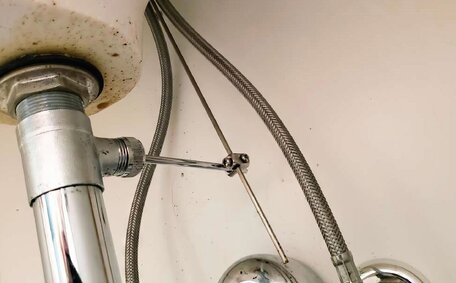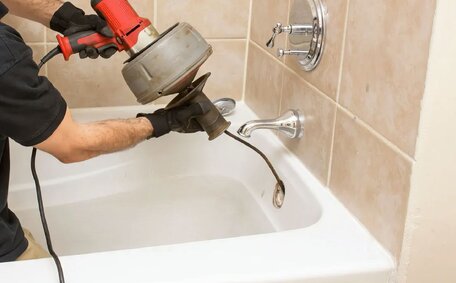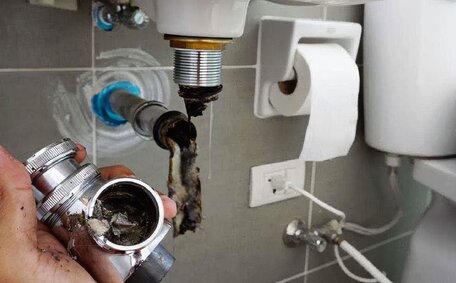What is Pipe Patching?
Pipe patching is a targeted repair method used to fix minor pipe damage. It involves applying a patch of fibreglass matting and epoxy resin over the damaged section of pipe. This creates a permanent seal without needing to replace the entire pipe.
A key benefit of pipe patching is that it does not require digging up the pipe. The plumber only needs to cut a small access hole to reach the damaged section. Following patching, the access point is sealed and the area is reinstated.
Pipe patching is an economical choice for minor repairs, causing minimal disruption and avoiding significant excavation work associated with complete pipe replacement. It is typically the favoured method for pipe issues such as small holes, cracks, or spots of corrosion.
However, pipe patching has its limitations; it’s ideal only for localised fixes and isn’t suitable for pipes that are extensively damaged or compromised by widespread tree root infiltration. In those cases, full pipe relining vs replacement may be better options.
What is Pipe Relining?
Pipe relining is a trenchless repair technique that involves inserting a resin-saturated lining inside the damaged pipe, forming a 'pipe within a pipe’.
The process begins by using CCTV cameras to inspect the pipe and locate any problem areas. Next, the resin-coated liner is inserted through an access point and inflated to fit tightly against the pipe walls. UV light or steam is used to cure and harden the resin.
Once set, relining generates a smooth, seamless, and corrosion-resistant interior, adeptly restoring the pipe’s structural integrity and flow capacity. This allows for the rehabilitation of pipes without the major disruption of digging them up.
Key benefits of pipe relining include:
- Minimally invasive - no need to dig up pipes, lawns or driveways
- Long lifespan - relined pipes can last 50 years or more
- Versatility - suitable for all pipe materials and hard to access areas
- Cost-effectiveness - saves on excavation, replacement and landscaping costs
Relining is often the most practical and durable solution for extensive pipe repairs where integrity and functionality are concerned. It offers the benefits of an inner new pipe without the hassles of traditional pipe replacement methods.
Key Differences Between Pipe Patching and Relining
There are some notable differences between pipe patching and pipe relining that determine which method may be better suited for certain repair situations:
Repair Extent
Pipe patching entails adhering a small fibreglass patch over a specific area of damage.
While suitable for minor damage, like small holes or cracks, it’s not recommended for extensive corrosion or severe root intrusion.
Trenching Requirements
Neither technique necessitates complete excavation, thus protecting your garden and driveway, yet pipe relining can renew sections of pipe up to 100 metres from a single access point. Patching can only be done at the exact site of damage.
Structural Reinforcement
The epoxy patch provides some reinforcement but relining essentially creates a new ‘pipe within a pipe’ – restoring integrity and flow capacity throughout the length of liner.
Cost Factors
Patching is more cost-effective for minor, localised repairs, but for broader issues, relining often becomes the superior choice over pipe replacement.
Longevity
Patches generally last between 10-15 years, but relined pipes can surpass 50 years, matching the service life of new pipes.
In summary, pipe patching suits small, easily accessed areas of damage while pipe relining offers comprehensive restoration for extensive deterioration affecting longer drain pipe lengths.
Cost Comparison
When comparing the costs of pipe patching versus pipe relining, there are several key factors to consider:
Extent of Damage
Simple patch jobs for minor damage like small holes or cracks may start from around $150, while relining typically starts at $2,000, varying with pipe length and access.
Pipe Length
Patch repairs entail a fixed charge for the affected area, while longer pipes needing relining will involve higher material and labour expenses.
Excavation Requirements
Neither method needs full pipe exposure, but in hard-to-reach areas where excavators are needed, the costs can escalate for both.
Overall, simple patches are the budget fix for minor issues while the relative relining cost offers longer-term value for issues affecting long pipe sections. When pipe replacements are unavoidable and extensive, relining enters the scene as a full-scale rehabilitation solution at 60-70% of the traditional replacement costs.
Time Comparison
Pipe patching and relining also differ significantly in terms of the time investment required:
Pipe Patching
The patching itself usually takes 1-2 hours to apply after accessing the site. However, additional time is needed for:
- Inspection of damage
- Excavation of access holes
- Curing of patch material
The entire patching process is usually complete within 4-6 hours.
Pipe Relining
A relining job also requires inspection and access hole excavation. But the application of the liner tube along long pipe sections means the installation process itself takes significantly longer.
Some additional factors impacting the time include:
- Pipe length - Longer pipes take more time
- Cure times - UV light curing is faster than steam
- Number of junctions - More preparation at junctions required
A full pipe relining project can vary in duration from 8 hours to 2-3 days, contingent on various factors.
In terms of efficiency, patching is rapid, but for extensive repairs, the intricate installation process of relining justifies its durability and longer lifespan.
Durability Comparison
When it comes to the durability and longevity of repairs, pipe relining far outpaces patching:
Expected Lifespan
Patch repairs offer a short-term remedy, typically lasting 10-15 years. However, relined pipes essentially create a new pipe within the old pipe, and this can last a remarkably long time - over 50 years.
Withstands Pressure
The robust woven fabric liner holds up against water pressure and flow without deterioration. Some patch repairs may eventually fail if the patch material separates under pressure.
Resists Corrosion
Pipe relining provides corrosion resistance by sealing out moisture and roots. Patches do not protect against wider corrosion of ageing pipes.
Handles Root Intrusion
The tough liner means repaired pipes can withstand further root intrusion that might damage unlined pipes. Patches applied over existing root-damaged areas face ongoing risk.
In situations where there is widespread deterioration or root damage, pipe relining offers the only viable long-term solution. For longevity that matches new pipes, relining surpasses patching many times over.
When to Choose Pipe Patching
Pipe patching is most appropriate for minor, localised damage needing quick repairs. Key situations where patching is the preferred option include:
Small Holes or Cracks
Patching offers a fast, cost-effective solution for minor damage, like holes less than 40mm across or small cracks.
Areas Difficult to Access
If pipe damage is located in a challenging spot, patching avoids extensive excavation. It requires only a small access hole instead of extensive excavation.
Under Gardens, Lawns or Landscaping
For exterior pipes under landscaped areas, patching is preferable as it minimally disturbs the site and preserves the garden’s appearance after restoration.
Lower-Priority Pipes
Patching can be an interim solution for non-emergency sewer pipe issues when relining isn’t economically viable.
So when it comes to minor damage, limited access, or tight budgets, patches provide a rapid and affordable repair option. They serve best as temporary solutions rather than permanent fixes matching the lifespan of new pipes.
When to Choose Pipe Relining
Pipe relining is suitable for extensive damage over long sections of pipe. Key situations where relining is preferred include:
Widespread Corrosion Damage
If pipes have corrosion damage along large portions of their length, relining provides full rehabilitation without needing replacement.
Trees Causing Root Intrusion
Relining can fortify pipes against encroaching tree roots, reinforcing the structure to resist further root invasion.
Inaccessible Pipes
For sewer pipe relining, even pipes in hard to access areas like under buildings or dense vegetation can be repaired without major excavation.
Multiple Pipe Issues
When there are problems at multiple points along a pipe’s length, one relining job can restore the entire line.
Sewer Lines Prone to Blockages
Relining waterproofs and smoothens ageing pipes, preventing the recurring issue of blockages.
Despite its higher initial cost, relining is a wise investment. When facing repairs across entire pipe systems, it brings long-term value by matching the 50+ year lifespans of new pipes.






